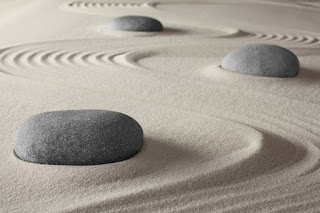Simple Meditation for Beginners – What and How?
Body Position / Posture – I usually meditate lying down or sitting down. I try to connect my thumb with my index finger in both hands.
 |
| how to meditate for beginners at home |
If you want to know DEEP about How to Meditate have a look How to Meditate for beginners.
Or about Meditation
I know this is a technique supposedly to facilitate the flow of energy in the body, but my reason is more prosaic – just if I don’t do it, I feel that I don’t know what to do with my hands during meditation. Somehow I feel incomplete then, however ridiculous it would sound.
I do not cross my arms (or legs if I meditate lying down) – I let them lie freely. I also take care not to tighten my stomach – for me, tensions often accumulate in my stomach and I need to be able to breathe freely through my diaphragm.
When and where to Meditate for a Beginner
I meditate in the morning or evening – depending on the needs and the time I have. I also meditate when I need it during the day or while traveling – then all you need is a comfortable place to sit down and close your eyes – that’s all.
I don’t have meditation corners, nor do I make meditation dependent on any external factors. I can lie on the bed, sit on the sofa, go out to the terrace or garden.
Beautiful circumstances of nature will certainly make meditation training more enjoyable, but they are absolutely not necessary. Finally, during meditation I go on a trip deep inside myself, not to the forest.
How long a Beginner should meditate?
I started my meditation for 2 minutes. Seriously, for 2 minutes. And that is enough to start with and I could even say that it can be a big challenge. Then I extended my meditation time, but it never lasted more than 20 minutes. I prefer it regularly, but less. Such mini-meditations for beginners act as power naps.
The rule is very simple – I set the alarm clock on my phone, then mute it for other sounds and meditate until the alarm clock rings. At first, it was hard for me to stand doing nothing for a very short 2 minutes! After all, beginner meditation is nothing but structured doing NOTHING.
Several Simple Meditation Techniques for Beginners
First of all, I must tell you that I am not a meditative guru, but I have studied and practiced a lot about meditation, I have no courses and certificates as of now, as I’ve been teaching meditation to students and beginners locally and a little bit online only.
Of course, I read a lot, I was looking for gaining more knowledge, but now I base myself solely on my experience, collected over many years.
Meditation Technique of Conscious Breath for Beginners
 |
| how to meditate for beginners at home |
Conscious breath is the most important aspect of meditation especially for beginners. Breath is the activity that most strongly affects the body – fast, shallow, broken breath is often the result of effort, stress and rush – consciously deepening the breath, we help the body deal with stress and e.g. cortisol ejection.
My friend is a sports psychologist and I once had the opportunity to try the equipment with which she worked. I can’t remember its name for anything, but it hooked me up to various sensors that were supposed to monitor my body’s response while a graphic visualization of my well-being and stress level was displayed on the monitor.
 |
| how to meditate for beginners at home |
It was about checking whether I could, for example, keep my body relaxed in a minute. The test took place at a meeting where there were also a few people I didn’t know. I got up from the chair to come over and … fell out like long, tripping over a cable.
I got up, it was terribly stupid, but did not pay attention to it at all, only quickly hooked me up to the device, which of course immediately showed how much this situation stressed me. My job was to calm down in a minute. I closed my eyes and began to breathe deeply. Managed to.
Deep breathing is not a skill we are born with. Men have it easier because they breathe diaphragm naturally, women must learn it.
 |
| how to meditate for beginners at home |
In high school I belonged to two choral groups – amateur, but recognized and awarded at festivals in the country and abroad. There, learning classical singing, I learned to breathe. Because without proper breathing there is no good sound.
Deep breath is breath to the diaphragm. It’s easy to check how you breathe naturally – just lie flat on your back and put 2 books on top of yourself: one on your stomach, the other on your chest and breathe normally. Which one will rise?
Breathing with your diaphragm can be done in exactly the same way, lifting the book on your stomach or without weight, but consciously paying attention to it during meditation is important for a beginner. At first it will be very unnatural, I know, but after a while reflex and ease will appear.
 |
| how to meditate for beginners at home |
During the meditation of conscious breathing, I try to breathe evenly and deeply (but without forcing the pace), repeating in my mind ‘inhale’ and ‘exhale’ – I focus completely on this activity. At first, sometimes I try to lengthen my breath in and out to calm my body, then I care for an even, unforced rhythm. ‘Inhale’ and ‘exhale’ – that’s all that’s important at the moment.
The 2 Color Technique – Simple for Beginners
 |
| how to meditate for beginners at home |
This beginner technique of meditation is also related to breath. When I breathe in, I visualize that I breathe in clean, clear, light, refreshing blue air and with the exhale I release all negative energy in the form of dark green, darker, ‘ugly’ and ‘used’ air.
I take lightness with my breath and get rid of everything that is bad (e.g. bad thoughts) with my breath. And that’s it, that’s all the technique. It may sound trivial, but it helps!
 |
| how to meditate for beginners at home |
As per my personal suggestion; this is a wonderful and most simple meditation technique for a beginner who’s just starting out. Though you can choose any of the meditation techniques, however, I would personally suggest you to start with this and then move on and try other meditations being a beginner.
Meditation Technique of Clouds and Balloons – Simple & Cute for Beginners
Sounds cute, right? It is very useful if we want to learn to observe our thoughts from a distance during meditation.
 |
| how to meditate for beginners at home |
When I meditate, I try to be very aware. When I feel that my head is draining and between ‘inhale’ and ‘exhale’, I persist in thinking, e.g. about the work that awaits me, I do this exercise: I think ‘think, think!’ And then I visualize that I enclose this thought in a balloon, or put it on a cloud, which flies slowly into the sky and disappears behind the horizon.
Sometimes, when I have a hard day or a difficult time – such balloons, even during a 5-minute meditation, let go so much that they could be used in the tale “Departure”! It’s nothing, I accept this condition.
 |
| how to meditate for beginners at home |
So, that was from me today about beginner meditation. I sincerely hope you find a useful meditation being a beginner. I’ll be happy to read about your experiences with meditation – the good ones, but also about the difficulties or doubts, if any. I will try to help if I can!
9 Basic Meditation Tips for Beginners
 |
| how to meditate for beginners at home |
The following 9 tips will help you get the right mindset about meditation. Try one or use all nine!
These tips will make meditation, and all its wellness benefits, more accessible to anyone.
- Start Small
 |
| how to meditate for beginners at home |
Thinking you are going to jump right into meditation for an hour every day is, simply, ridiculous. No one has the time or dedication to stick with an unrealistic goal like that.
Set a small goal that you can actually achieve. Three to five minutes per day of meditation is much more reasonable. If even that seems too much, commit to three focused breaths per day.
As you notice the positive effects of meditation in your daily life, you will organically increase the amount of time you commit to mindfulness.
Start small and work up from there.
- Don’t Succumb to All-Or-Nothing Thinking
 |
| how to meditate for beginners at home |
Realistically, carving out a chunk of your day at the exact same time, seven days a week, for a pre-determined number of minutes, doesn’t work for most people’s schedule.
It’s okay if you can only do a couple of minutes today, more tomorrow and fewer the day after that. You haven’t failed because you didn’t stick to a rigid schedule.
Believing that this commitment to meditation is an all-or-nothing ultimatum will set you up for failure.
Informal mediation practices can provide the same health and wellness benefits as formal meditation. It may be something as simple as taking a few deep breathes each time you complete a task or begin a new one.
- Stay Comfortable
You can sit on the floor. You can sit in a chair. You can lay in the grass.
 |
| how to meditate for beginners at home |
Find a space and position that is comfortable for you. Typically, a quiet room where you won’t be disturbed is a good idea.
If you choose to sit, try to exercise good posture. Being in tune with your body and feeling the sensation of your breath is easier if you sit up tall.
Above all else, make the experience easy and comfortable for you. If it isn’t, you won’t stick with it.
- Feel Your Breath
 |
| how to meditate for beginners at home |
Something as simple as focusing your energy on your breathing pattern can provide the benefits of meditation.
By redirecting your attention and thoughts to something experiential, such as feeling your chest open up as you breathe in, you can take a break from overthinking emotional worries, such as your to-do list for tomorrow.
It’s okay to notice that your mind wanders away from your breath during meditation. It’s to be expected, especially when you are just beginning the practice.
- Start the Day with Mindfulness
Before the chaos of life takes over your day and stresses you out, set aside a minute for meditation.
 |
| how to meditate for beginners at home |
Starting the day with a quick meditation or moment of mindfulness can alter your thought patterns and mindset for the remainder of the day.
Thought is powerful. Use it to your advantage to make your day more relaxed.
- Accept the Wandering
Your thoughts and concentration will wander. It’s inevitable. Be gentle with yourself and accept that the wandering is natural.
As you devote more time to meditation, it becomes easier to block out distractions and focus wholly. Until then, it’s okay to fail at perfect meditation.
Count your breaths, with no goal number of breaths in mind. When you notice your mind has started to wander, start your count back at “1”. This will refocus your mind in a constructive way that does not punish you for being human.
- Be Aware of Your Body
 |
| how to meditate for beginners at home |
If focusing on the sensation of your breath does not work for you, try this instead. Focus on the awareness of your body.
Start at your toes and work your way slowly up each body part. As your focus shifts between body parts, assess for pain, tension, and other sensations. Give the appendage a small wiggle to connect sensation to movement.
Slowly, work your way up to the top of your head.
Instead of focusing repeatedly on one sensation, like breathing, this technique calls for a moving point of focus.
- Use a Meditation Guide
 |
| how to meditate for beginners at home |
Meditation is successful when you can focus your attention on something experiential or concrete, instead of emotional or mental.
Breathing and awareness of your body are not concrete enough for some practitioners of meditation. In these instances, a meditation aid can add to the experience.
Try downloading a guided meditation or employing meditation malas to keep you grounded during the meditation experience.
- Smile
At the end of each meditation or moment of mindfulness, remember to smile. You have done something good for your mental and emotional well-being. You deserve to feel good about it.
Leaving your meditation with a happy and satisfied feeling will create positive reinforcement for continuing to meditate. You set yourself up for continued success when you take a minute to acknowledge that yes, you completed a meditation; and yes, it felt good; and yes, you’re going to meditate again tomorrow.
Reap the Benefits of Meditation
Whether you choose to try one or nine or zero of these tips, meditation can be a unique experience that you dictate. Decide on a method that works for you and start reaping the benefits of reduced daily stress and increased resilience to future stress.



